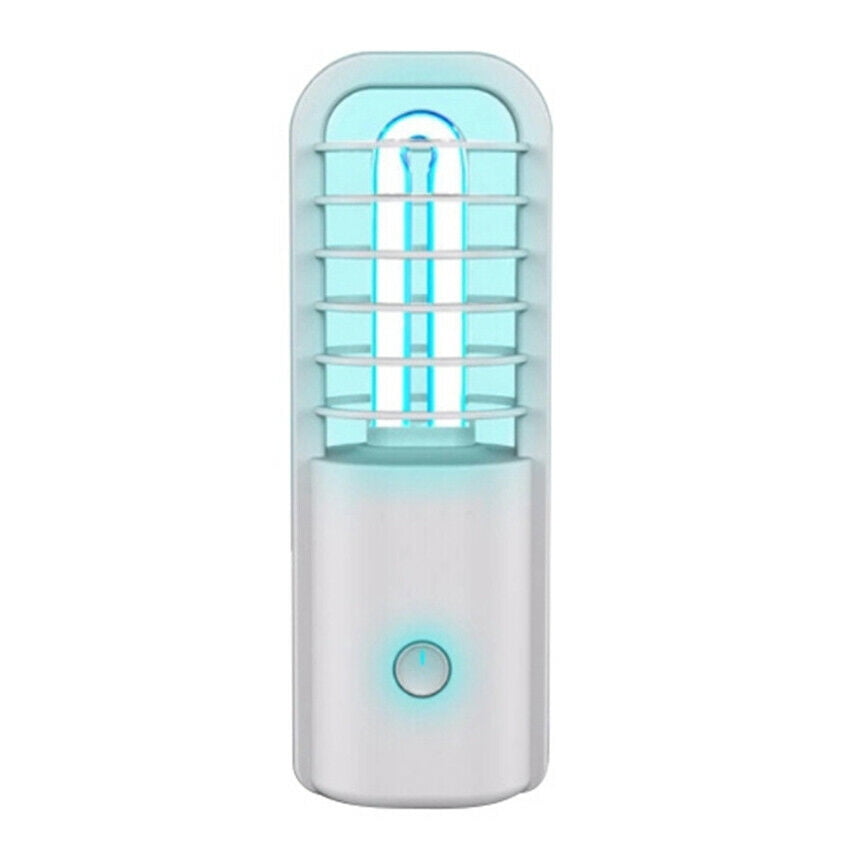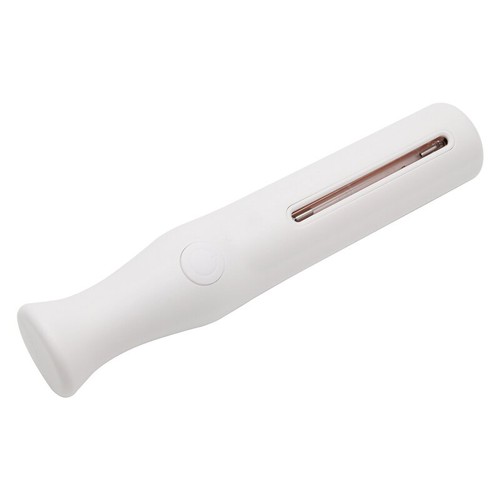

#Uvc light sanitizer portable
A 2014 study tested the efficacy of these portable wands and found that they killed 100% of commonly-found bacteria within five seconds and inactivated 90% of spore-forming bacteria, which are harder to kill, within 40 seconds.īesides surfaces, UVC light can purify water, too - when used correctly. The wands can be used anywhere, claim to work within seconds, and are often marketed to travelers concerned about things like hotel room sanitation. Sanitizing wands allow you to wave UVC light over anything you might want to disinfect, including counters, bedding, and steering wheels. These bacteria can cause strep throat, digestive problems, and a number of other illnesses. The study found that, compared to a toothbrush that had not been treated with ultraviolet light, the VIOlight got rid of 86% more colony-forming units of S.

One 2008 study tested the efficacy of the VIOlight, a $30 toothbrush sanitizer that claims to rid your toothbrush of disease-forming germs. Larger box-shaped versions fit tablets, toys, and baby bottles.
#Uvc light sanitizer how to
Each has its own set of instructions for how to use the light to kill germs, with specifics on things like how long the sanitation takes and, in the case of wands, how close it has to be to the object you're trying to sanitize. UVC lights available to consumers come in various forms, including boxes, bottles, and covered wands. How to use a UV light to kill germs at home

It is also effective against all germs, even newly-emerging pathogen strains. Killing bacteria and viruses with UV light is particularly effective because it kills germs regardless of drug resistance and without toxic chemicals. This has particularly important implications for public health since the possibility of non-toxic overhead UV lighting in public spaces could drastically reduce the transmission of diseases. This study was repeated in 2018 on the H1N1 virus, and narrow-spectrum UVC light was again found to be effective at eliminating the virus. This type of UVC light kills bacteria and viruses without penetrating the outermost cell layer of human skin.Ī 2017 study showed that 222 nm UVC light killed methicillin-resistant Staphylococcus aureus (MRSA) bacteria just as effectively as a 254 nm UVC light, which would be toxic to humans. Recently, however, researchers have been working with narrow-spectrum UVC rays (207-222 nm).
#Uvc light sanitizer skin
UVC light also works by destroying the DNA of pathogens, which makes it effective against "superbugs."īut this broad-spectrum light is also a health hazard - linked to diseases such as skin cancer and cataracts - and humans cannot be in the room when it is used. This is partly because UVC light can effectively sanitize hard-to-clean nooks and crannies. A study that included 21,000 patients who stayed overnight in a room where someone had been previously treated found that sanitizing a hospital room with UV light in addition to traditional methods of cleaning cut transmission of drug-resistant bacteria by 30%. Powerful UVC light has been regularly used to decontaminate surgical tools and hospital rooms. It is highly effective at decontamination because it destroys the molecular bonds that hold together the DNA of viruses and bacteria, including "superbugs," which have developed a stronger resistance to antibiotics. UVC light has a wavelength of between 200 and 400 nanometers (nm). Because UVC rays have the shortest wavelength, and therefore highest energy, they are capable of killing bacteria and viruses, also called pathogens.

The three main types of UV rays are UVA, UVB, and UVC. UV light is highly effective at killing germs


 0 kommentar(er)
0 kommentar(er)
